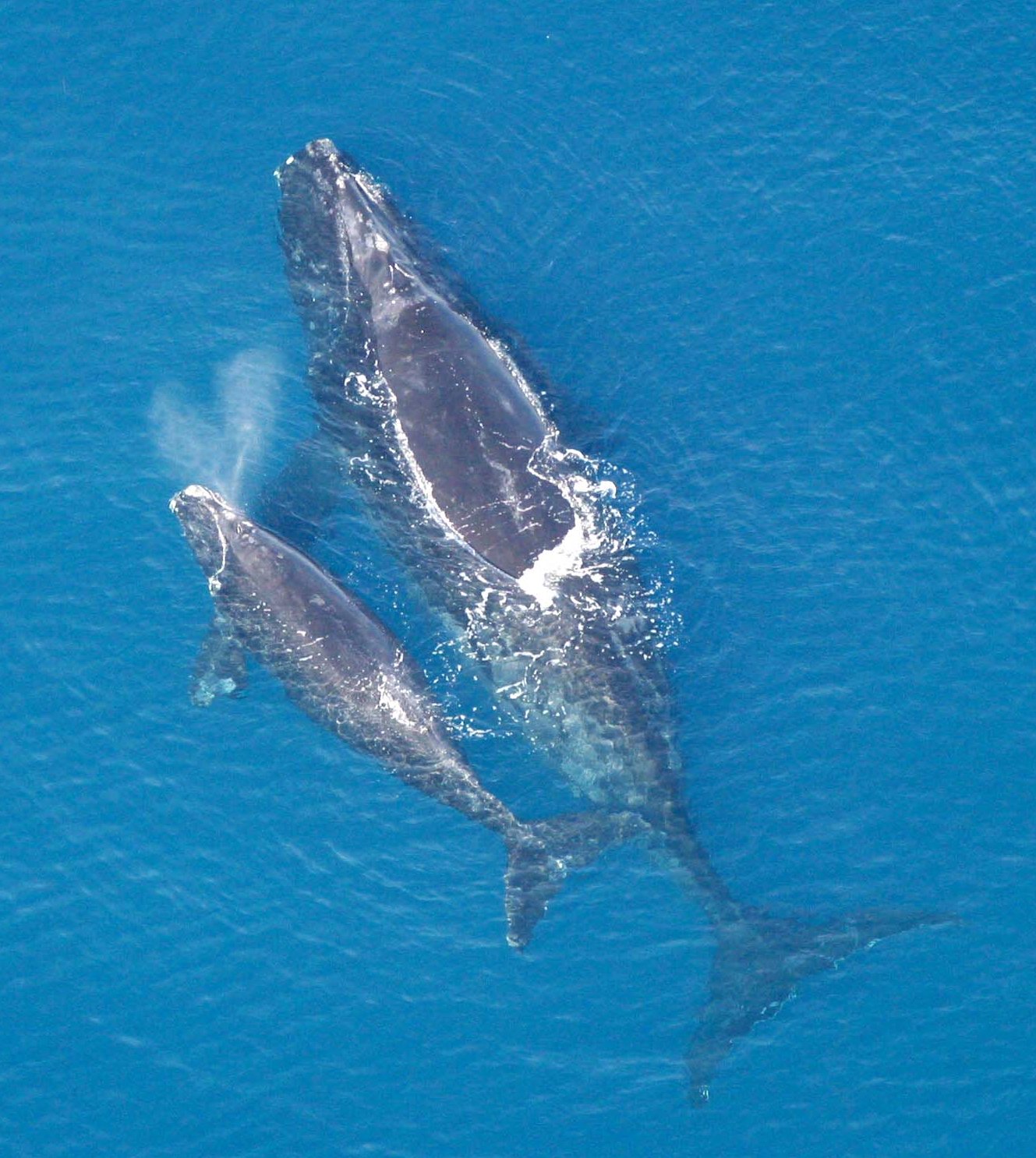Katherine Eshel
Policy Analyst
North Atlantic right whale populations are plummeting. The critically endangered species had a population of just 451 in 2016 and so far in 2017, 16 whales have died and there have been only five known births. The Trump administration’s proposal to allow seismic testing for oil drilling within the range of North Atlantic right whales could potentially jeopardize the vulnerable species even further and accelerate its extinction.
Policy Analyst
North Atlantic right whale populations are plummeting. The critically endangered species had a population of just 451 in 2016 and so far in 2017, 16 whales have died and there have been only five known births. The Trump administration’s proposal to allow seismic testing for oil drilling within the range of North Atlantic right whales could potentially jeopardize the vulnerable species even further and accelerate its extinction.

Left: A designated critical habitat area along the coasts of North and South Carolina, Georgia and Florida helps to protect the calving grounds of North Atlantic right whales, which range from Florida up to Canada. (Source: National Oceanic and Atmospheric Administration.) Right: The Trump administration has proposed to open up the coastal shelf from Florida to North Carolina to seismic testing for offshore drilling. (Source: Bureau of Ocean Energy Management.)
In April 2017, President Trump signed an executive order to reverse Obama-era policies that banned seismic testing for offshore drilling in the Atlantic Ocean. Unlike the highly visible impacts of oil spills, seismic testing insidiously affects right whales and other marine wildlife in a myriad of ways.
Air-gun testing, the most common method used for seismic tests, produces powerful sound waves that are louder than a roaring jet engine. Because sound waves travel four times faster in water than in air, air gun blasts may be picked up on monitors located thousands of miles away. Sound waves associated with offshore fossil fuel exploration and active production have been shown to disrupt whales’ foraging patterns and even to halt migration at long distances, as whales avoid going near noisy oil derricks. Exposure to noise is also associated with elevated stress levels; right whales depend on low-frequency acoustic signals to communicate over vast distances, but a single seismic air-gun survey can raise background noise levels 100-fold for weeks or even months, drowning everything else out.
The blasts also destabilize the food web, which can further affect the right whale’s chance at survival. A 2017 study found that, not only do air guns make the ocean a whole lot louder, but the pulses are also lethal to krill and other kinds of zooplankton that right whales depend on for food, killing more than half of the zooplankton over a nearly 2 square mile area around the blast.
Opening up the Atlantic shelf for seismic testing would also increase the risk of ship strikes, one of the leading causes of right whale population decline. While the areas proposed for seismic testing do not include the right whale’s calving grounds, whales have been known to range across the area proposed for testing. Increased traffic heightens the probability of a vessel striking one of the 440 remaining right whales in the North Atlantic.
The damage done to right whales by seismic testing is just one of many reasons to oppose offshore oil exploration and drilling off the Atlantic coast. Staunch opposition from local communities contributed to President Obama’s decision to ban offshore drilling in January 2017, and a bipartisan bill (H.R. 2158) was introduced in the House in April 2017 to ban seismic testing. During the bill’s subcommittee hearing on July 12, 2017, Peg Howell, former petroleum engineer and founder of Stop Offshore Drilling in the Atlantic, pointed out that every single mayor on the coast of South Carolina, as well as the state’s governor, opposed seismic testing and drilling.
At a time when solar and wind power are cheaper than oil, risking the permanent loss of a precious species like the right whale for a few years of oil and gas production is absurd. It is time for the Trump administration to listen to scientists and Atlantic coast residents and put a stop to seismic testing before it begins in earnest.

North Atlantic right whale mother and calf. Photo: National Marine Fisheries Service, open domain.
Correction: A previous version of this blog post included inaccurate information regarding the volume of seismic airguns.
Policy Analyst
